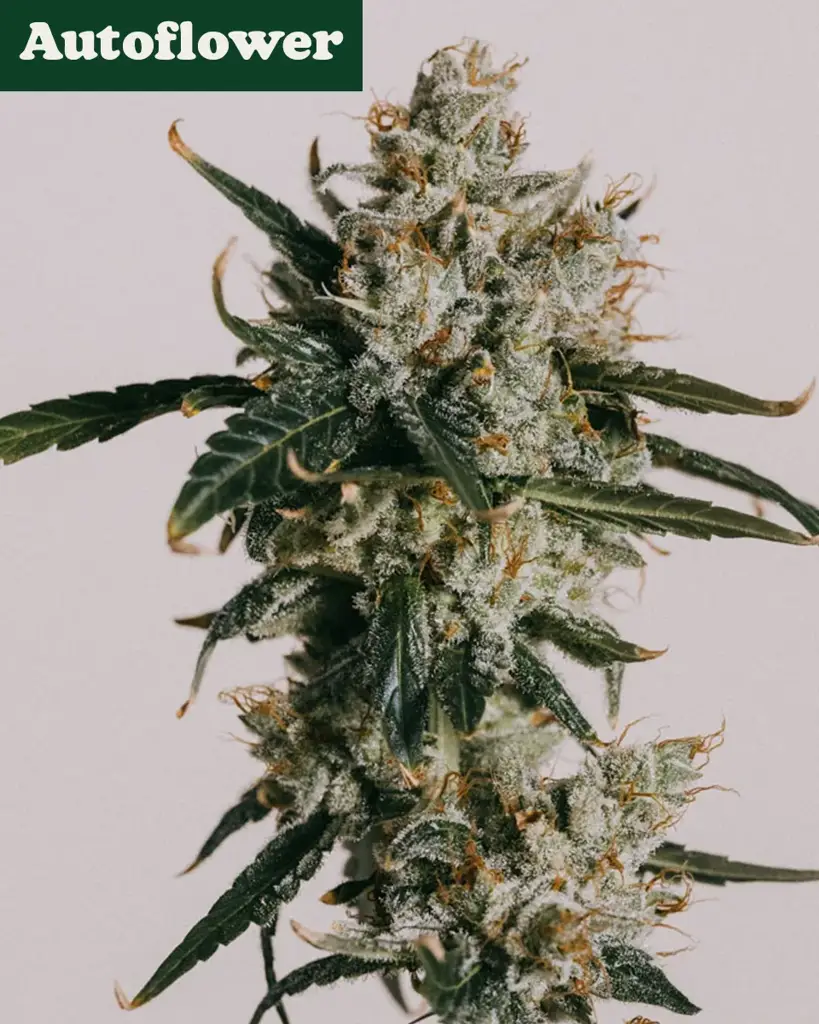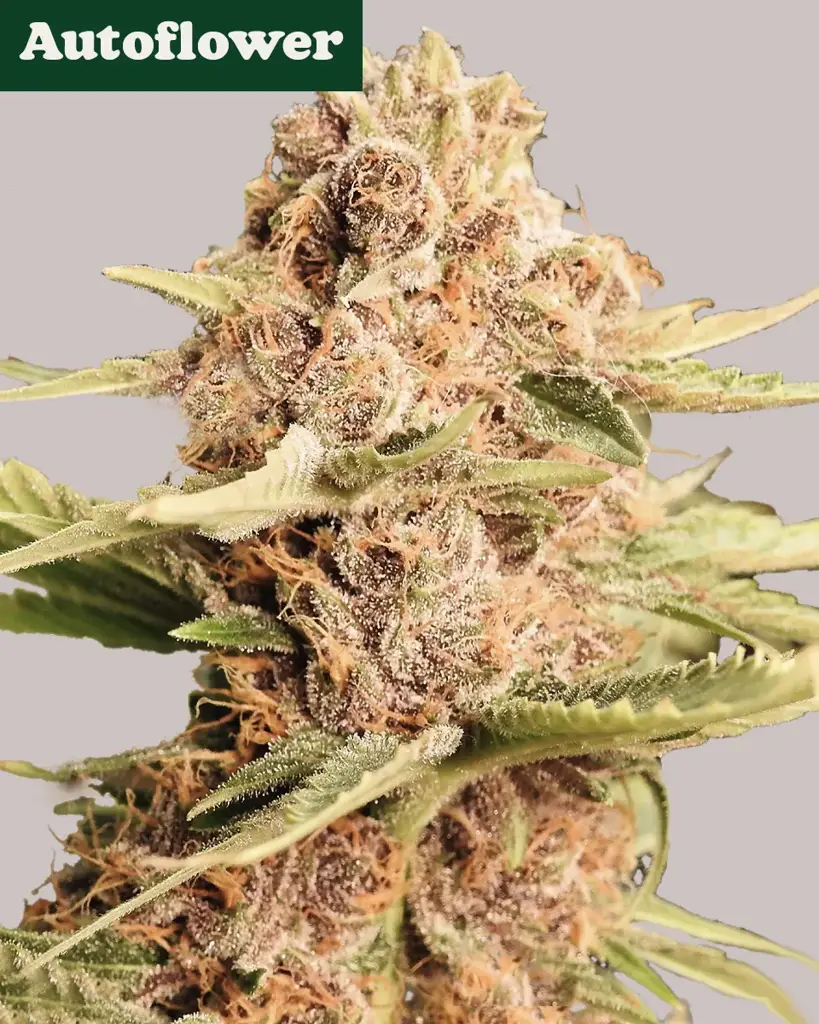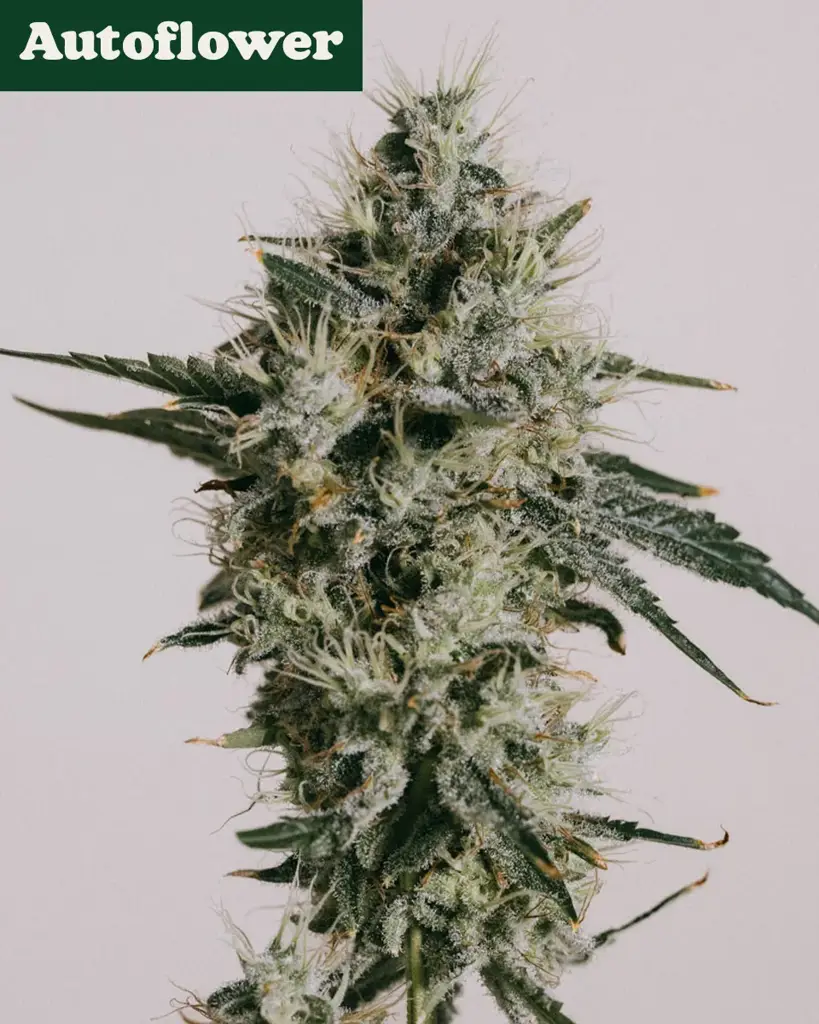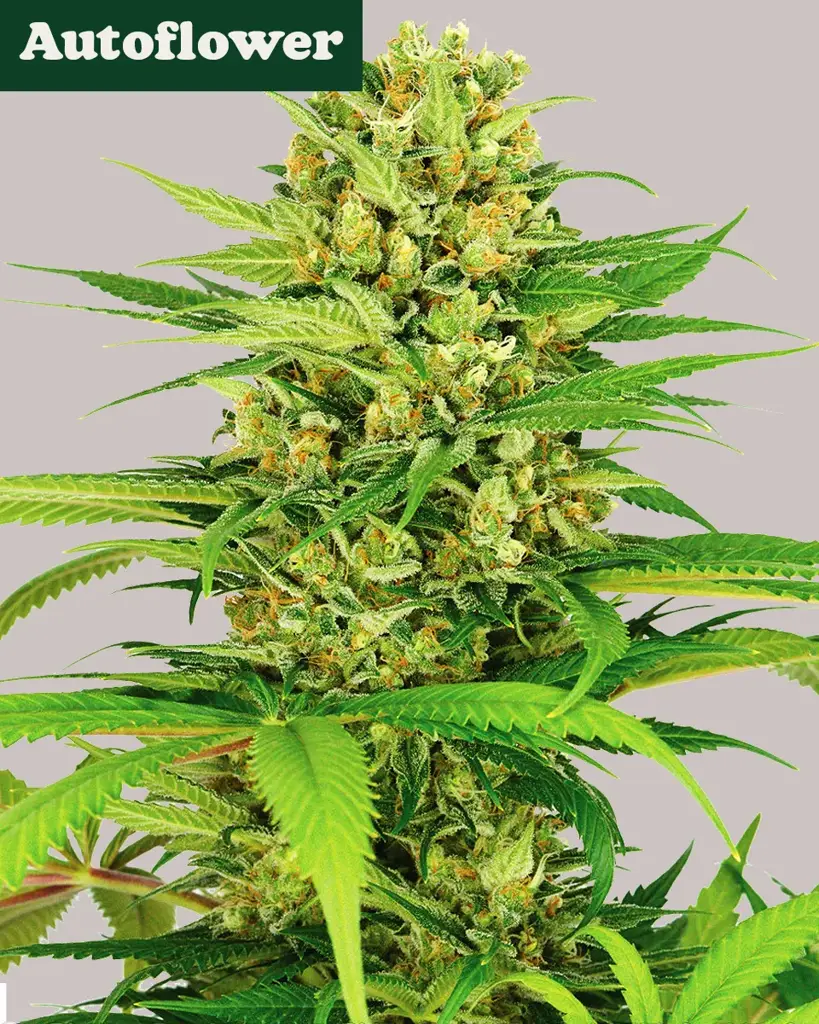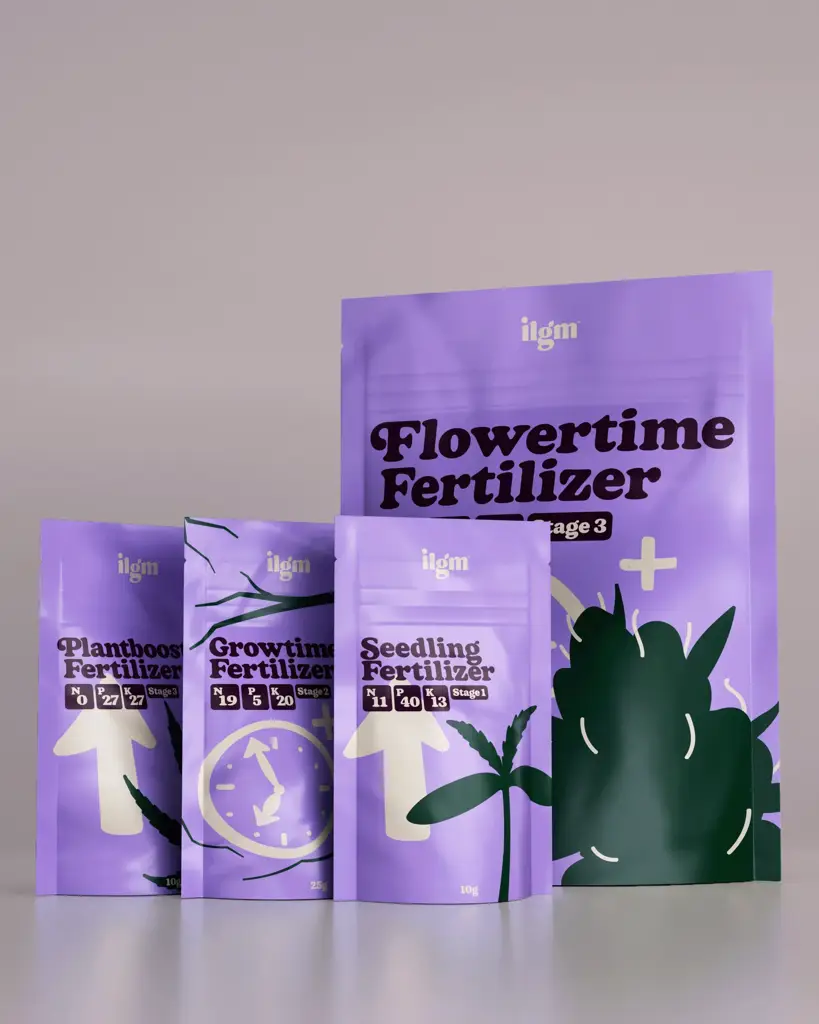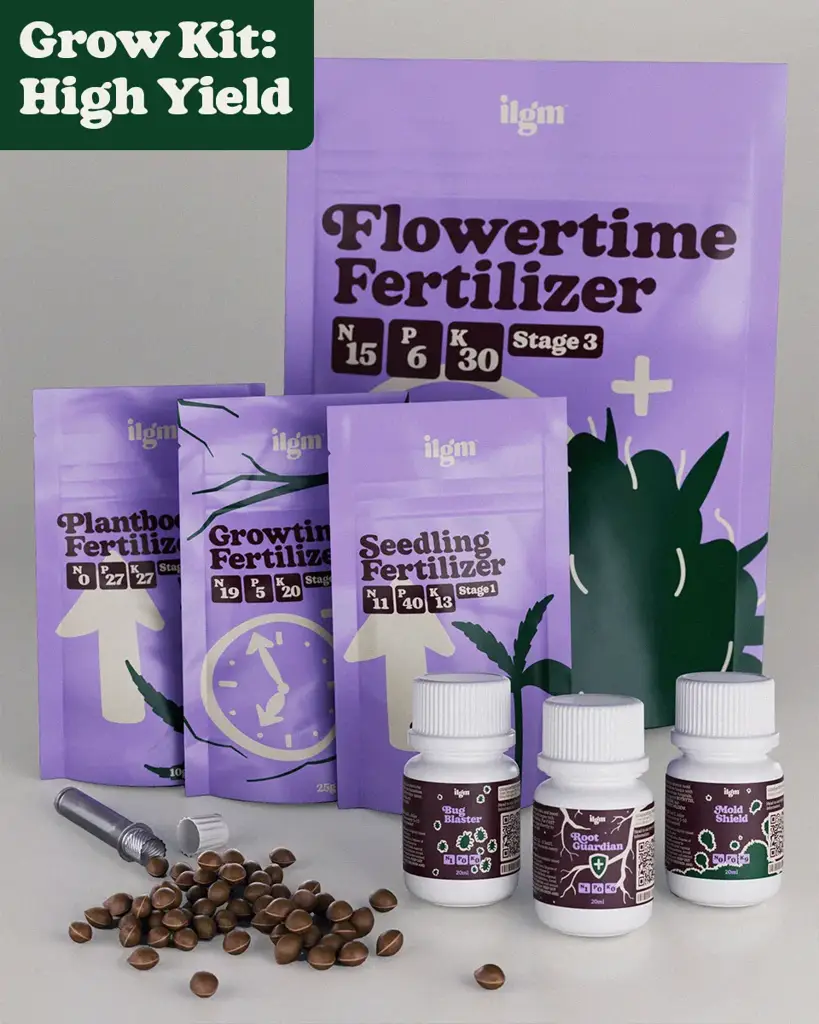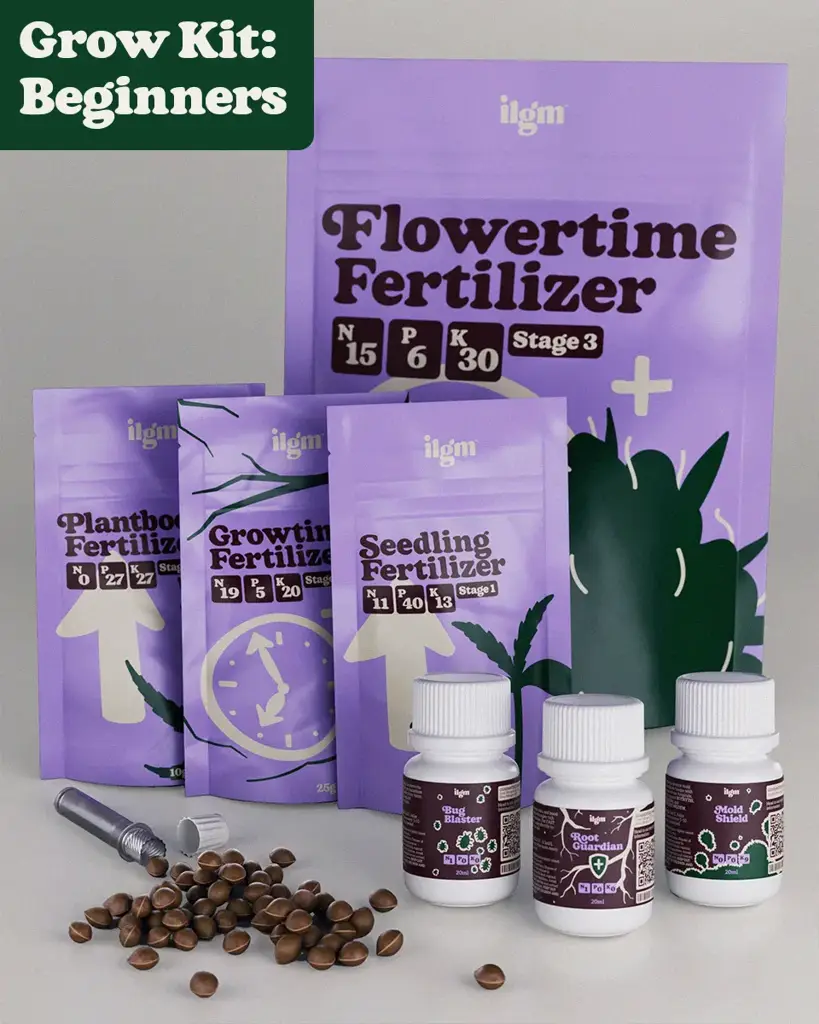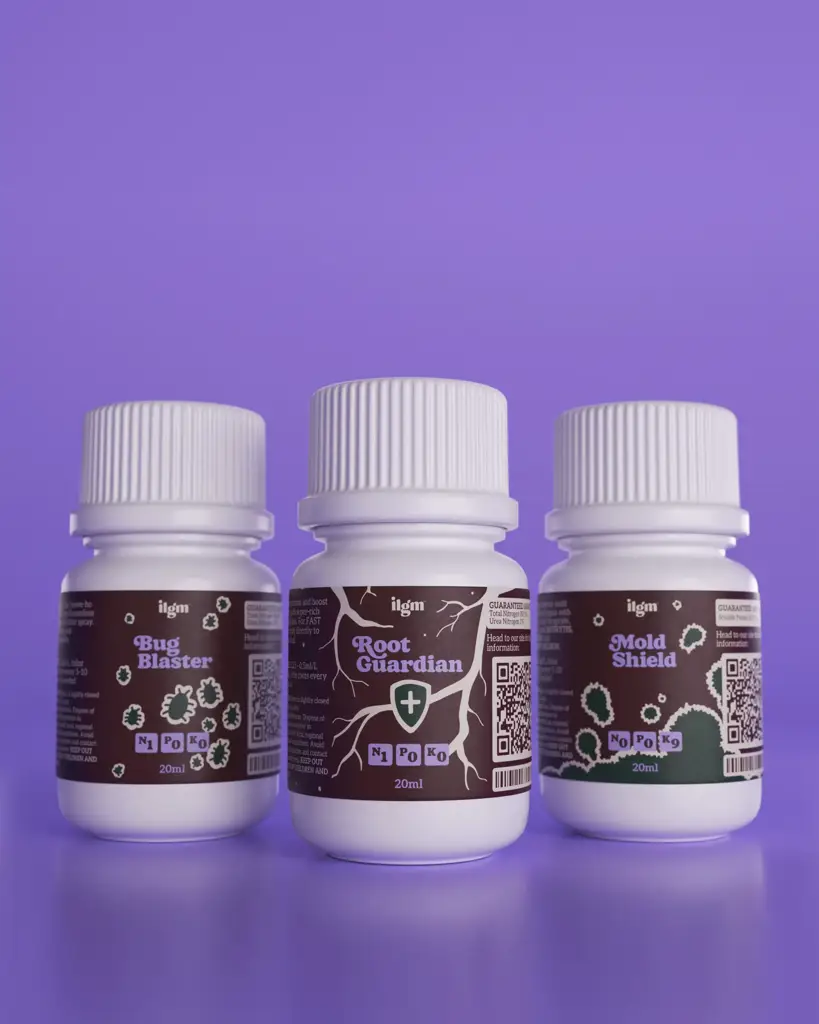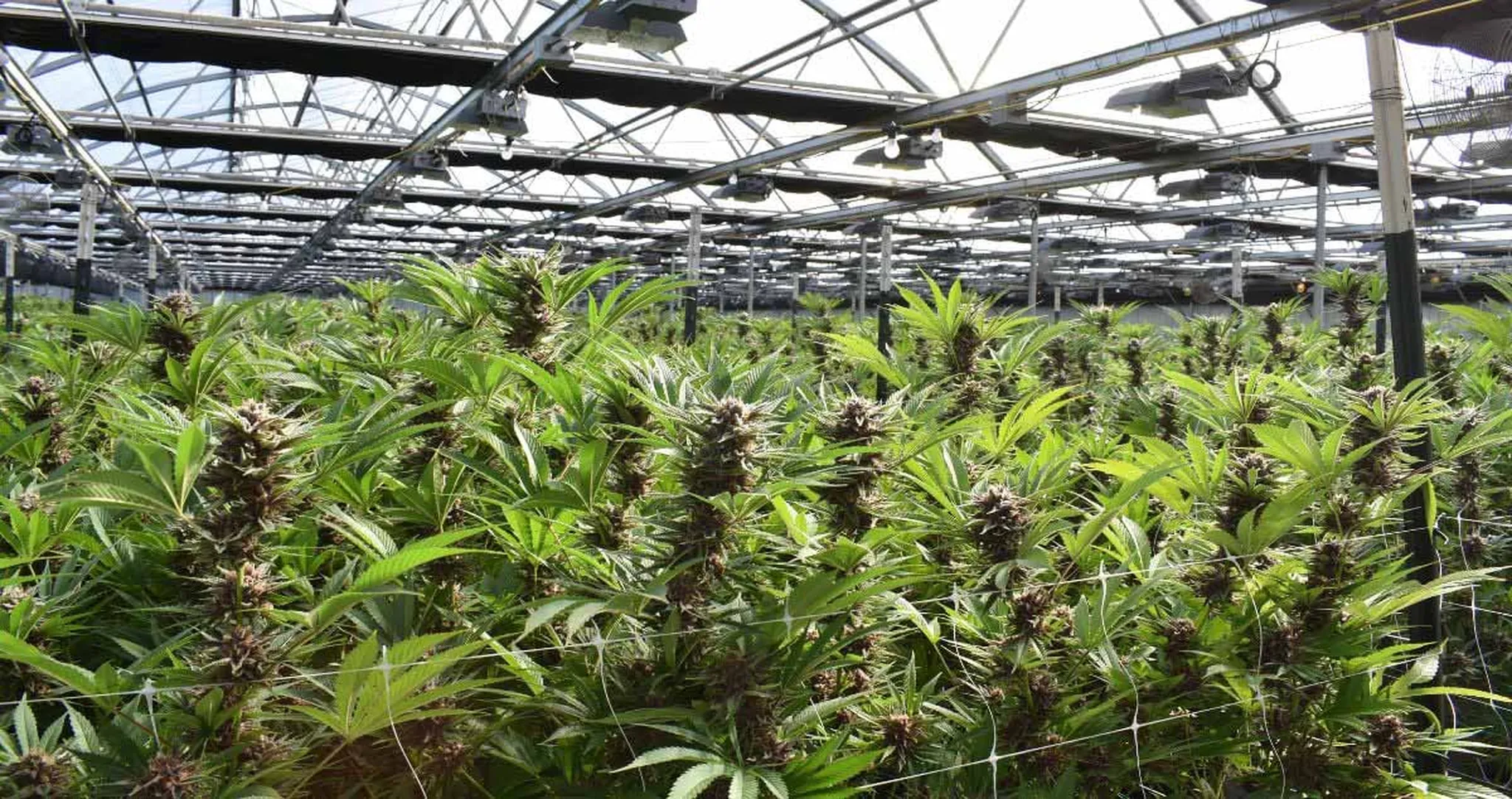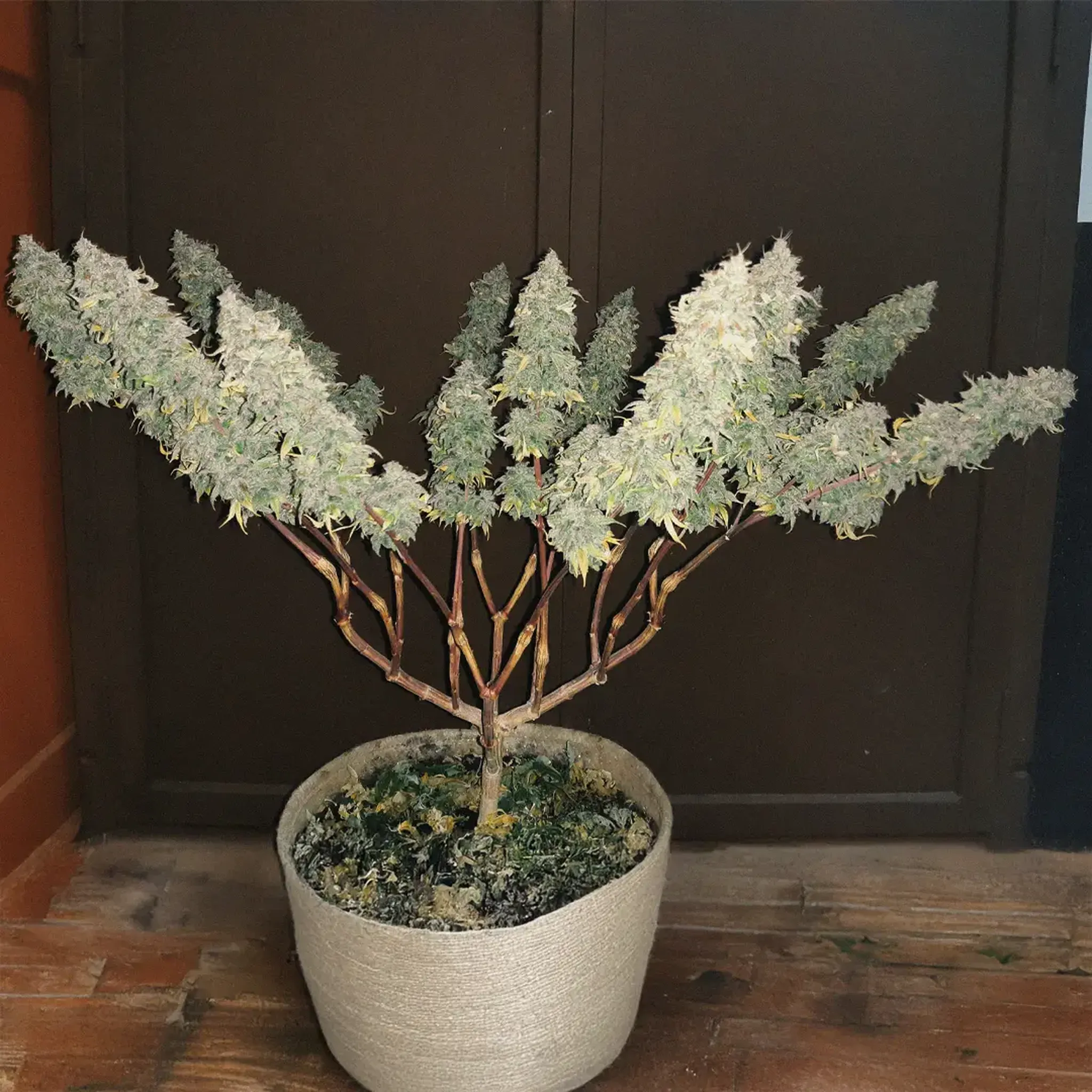
High-Stress Training Cannabis Plants for Bigger Yields
Topping, super cropping, and mainlining made easy—learn when and how to stress your plants the smart way.
Table of contents
- What Is High-Stress Training and Why Does It Increase Yields?
- What Do You Need Before You Start High-Stress Training?
- How Can You Prevent HST From Going Wrong?
- Topping and Fimming a Cannabis Plant for Bigger Yields
- Super Crop a Cannabis Plant for Bigger Yields
- Mainline/Manifold a Cannabis Plant for Bigger Yields
- Can You Combine HST and LST for Maximum Yields?
- Tie Down vs. Stress Training: Are They the Same?
- How Do You Help Plants Recover After High-Stress Training?
- How Long Should You Wait Between HST Sessions?
- What Should You Feed After High-Stress Training?
What Is High-Stress Training and Why Does It Increase Yields?
High-stress training (HST) is a group of techniques that can be used individually or in combination in an effort to increase yields, improve airflow, efficiently use your full grow tent space, and create a level canopy to maximize usable light.
You’ve probably read about low-stress training (LST) techniques, which typically involve bending. High-stress training involves inflicting a bit of pain on your plants, but with the information in this article and a little bit of confidence, growers of any skill level can accomplish HST techniques.
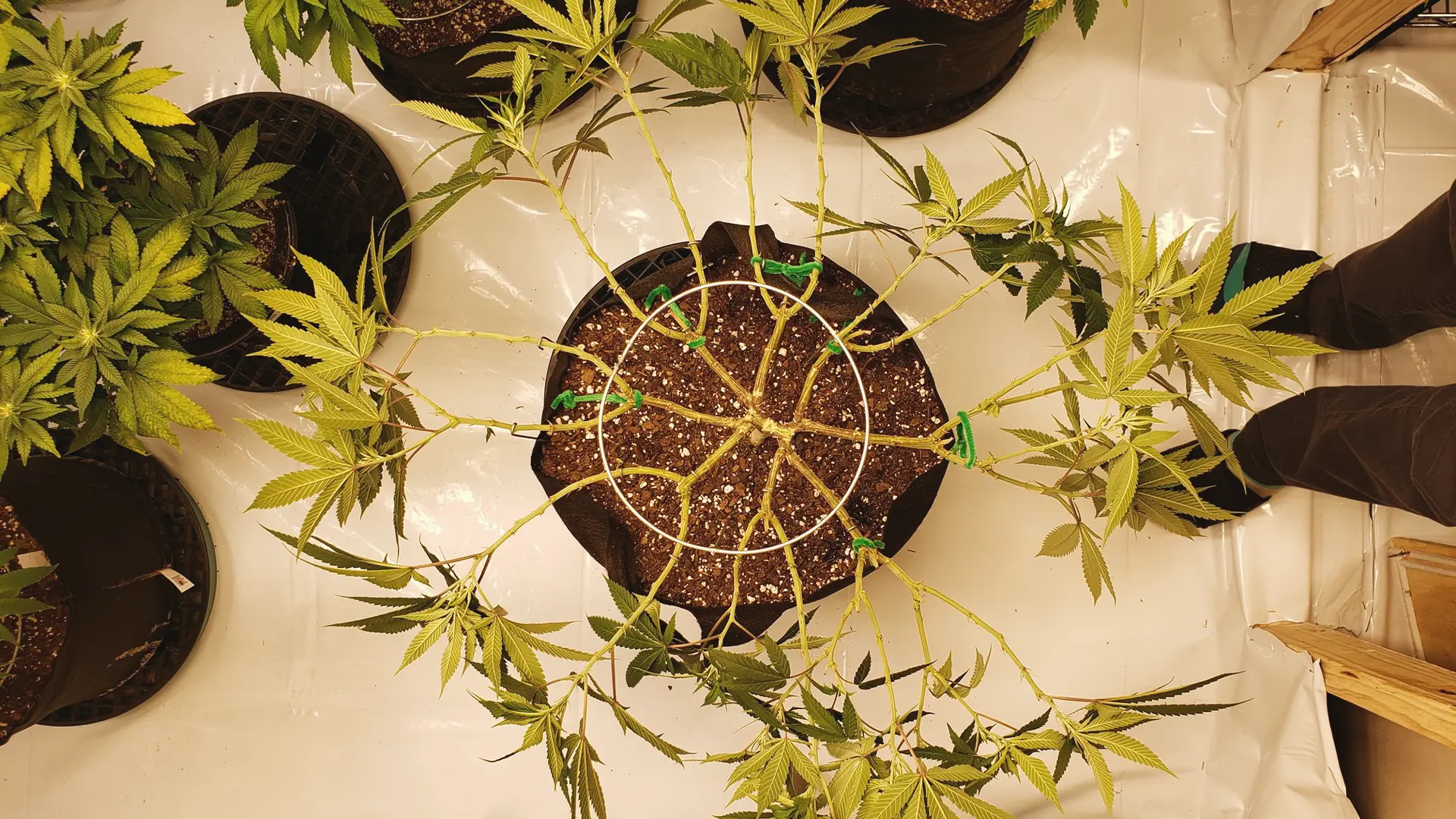 Mainlined plant by forum user Nickknowsfunny
Mainlined plant by forum user Nickknowsfunny
How Does Stress Help Cannabis Grow Bigger Buds?
Just like humans, when plants experience physical stress, a hormonal response occurs within the plant. Biologists have documented numerous ways plants utilize stress to develop resistance to insects and pathogens, much like how humans build muscle or develop immunity. Certain stress conditions can increase trichome density, aiding in our goal of enhancing the size and yield of the flowers.
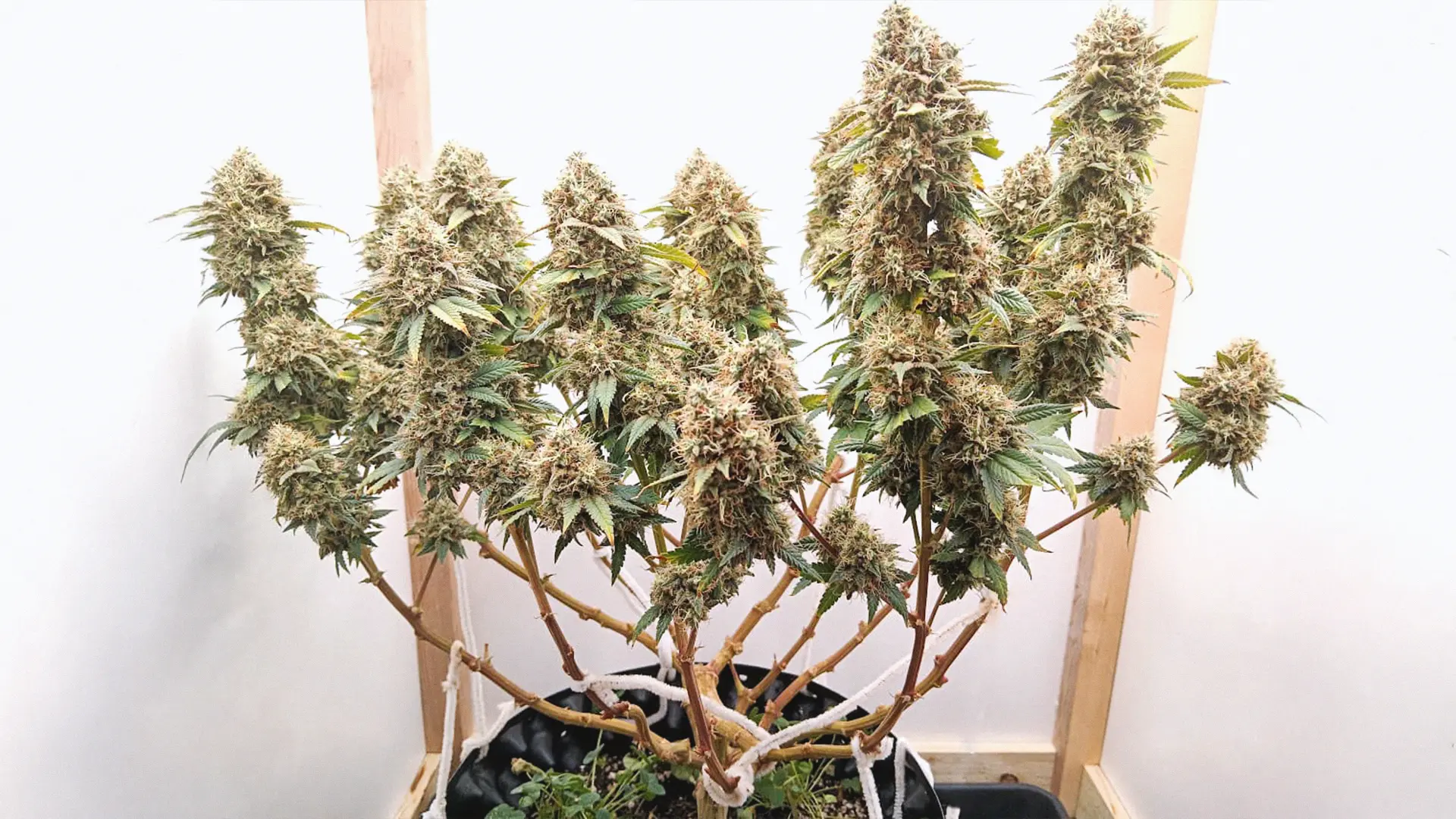 A beautiful plant mainlined by our forum user Madhatter1
A beautiful plant mainlined by our forum user Madhatter1
We created an article that covers the impacts, both good and bad, of stress on cannabis plants. With any sort of intentional stress, your plants need to be in good health so that they can recover quickly and take full advantage of the HST.
Should You (or Shouldn’t You) Use HST?
In my many years of growing, I’ve fallen into plants and broke branches. I’ve seen plants flattened by a fallen light. I’ve experienced how resilient a healthy cannabis plant can be. So don’t be fearful, but do consider a few things.
Don’t try too much at once. We want to stress the plant, but not shock the plant.
New growers should try new techniques on just one plant instead of the whole garden. This can help build confidence without putting the entire garden at risk.
Cannabis plants with larger root systems can handle HST better than young, less developed plants.
Many, but not all, growers avoid using high-stress training on autoflower varieties due to the limited time they have to recover. Stalled growth at any point in the autoflowers life can greatly reduce yields.
What Do You Need Before You Start High-Stress Training?
Being familiar with how your cannabis plant grows will help you make informed choices about where and how to cut. Each strain is different; should you top it, supercrop it, lollipop it, or all of the above? The tools needed for HST are items that you probably already have in the garden.
Which Tools Make HST Easier and Safer?
Sharp pair of trimming scissors
Garden Wire (rubber-coated)
Plant Tape
SCROG Net
In the absence of plant tape, I’ve used everything from scotch tape to duct tape, but I always keep a roll of electrical tape handy. Popsicle sticks or toothpicks make great splints for broken limbs.
When Is the Best Time to Start HST?
I want the plant to develop a bit of a root zone before beginning aggressive techniques. Plants will then have the ability to recover faster from HST.
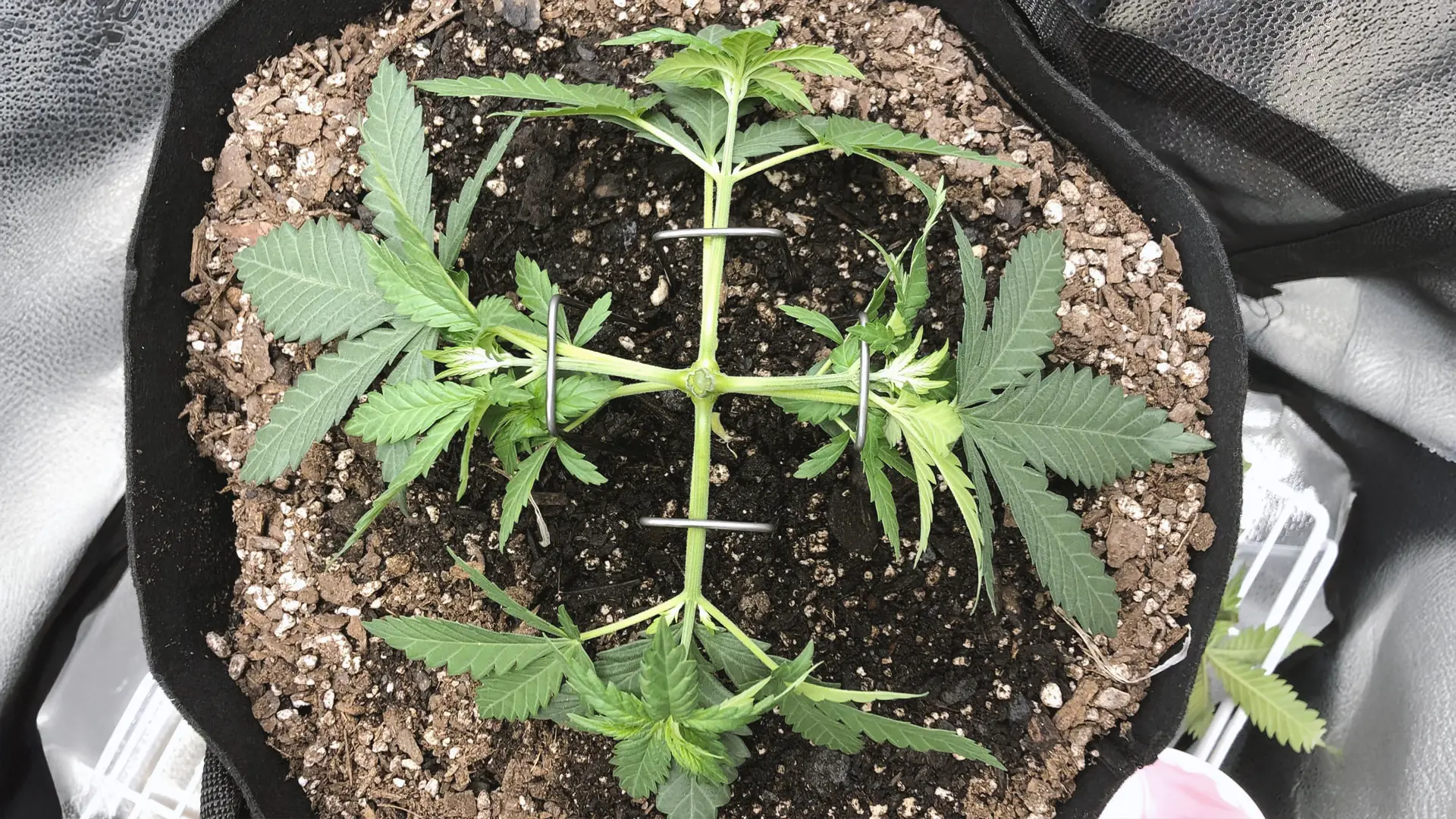 The start of HST by forum user ThatsNotMineOfficer
The start of HST by forum user ThatsNotMineOfficer
Avoid high-stress training during the flower stage. To increase yields, growers want all of the plant energy focused on producing buds, not recovery. The vegetative cycle is the best time to start and finish your high-stress training.
I typically do most of my lollipopping and super cropping in the week or two leading up to the flip. It doesn’t have to be done all at once, and I often do a couple of waves of HST before I put my plants into flowering.
Our Bestsellers
How Can You Prevent HST From Going Wrong?
As you enter the world of high-stress training, ease yourself into it. Don’t try a technique like super cropping on your entire garden; just try a few branches on one of your plants. Take notes on recovery times.
Don’t worry, we all make mistakes along the way. You will break a branch, I promise. But you’ll also get the chance to mend the break and appreciate how resilient cannabis plants can be.
Topping and Fimming a Cannabis Plant for Bigger Yields
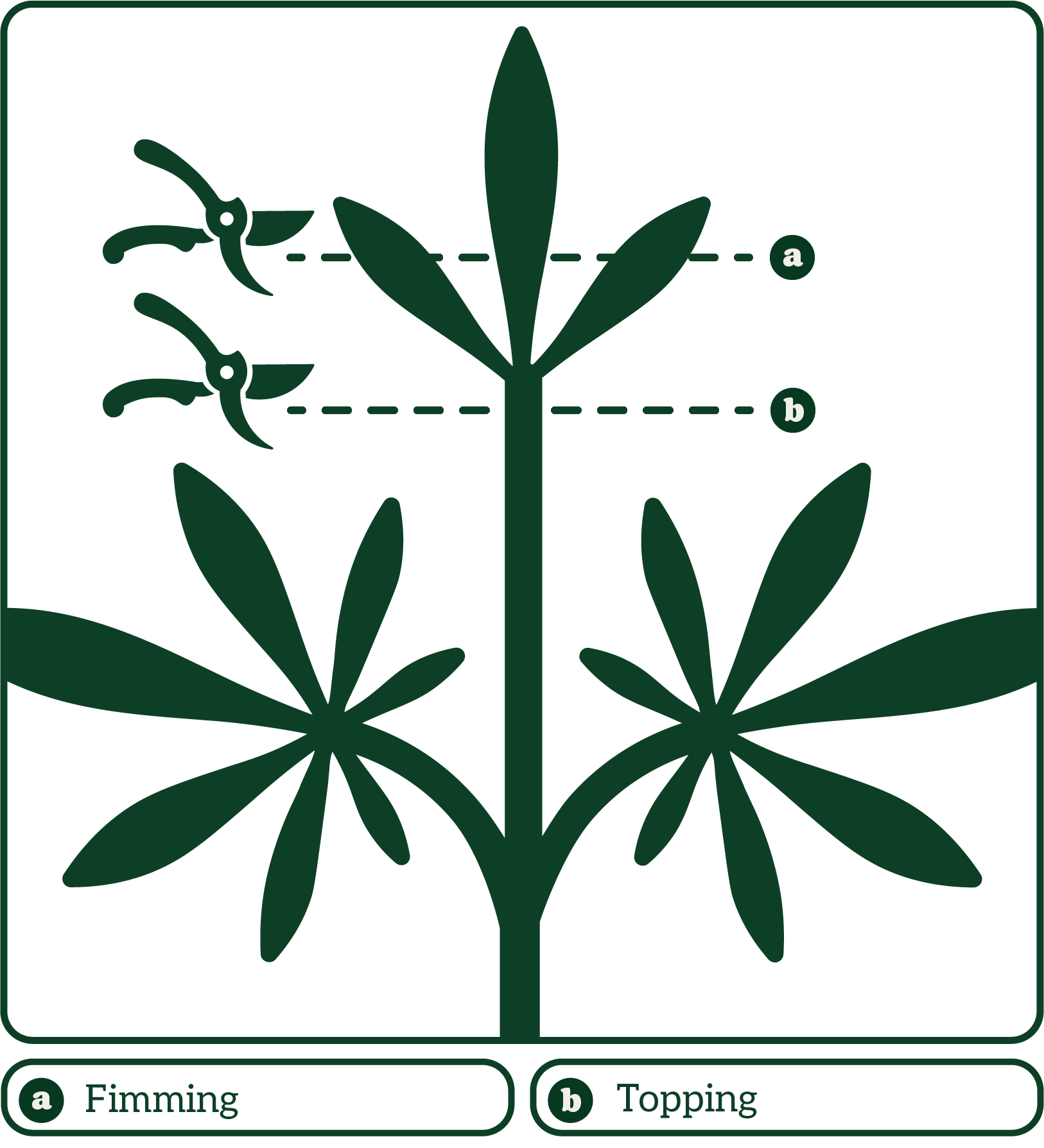 In my opinion, topping or fimming your cannabis plant is the least stressful HST technique, and it is very easy to accomplish. I use one of these two techniques on 99% of the plants I grow. Most strains respond well to topping, but there are a few that are best left to grow naturally.
In my opinion, topping or fimming your cannabis plant is the least stressful HST technique, and it is very easy to accomplish. I use one of these two techniques on 99% of the plants I grow. Most strains respond well to topping, but there are a few that are best left to grow naturally.
Where Should You Top for the Best Results?
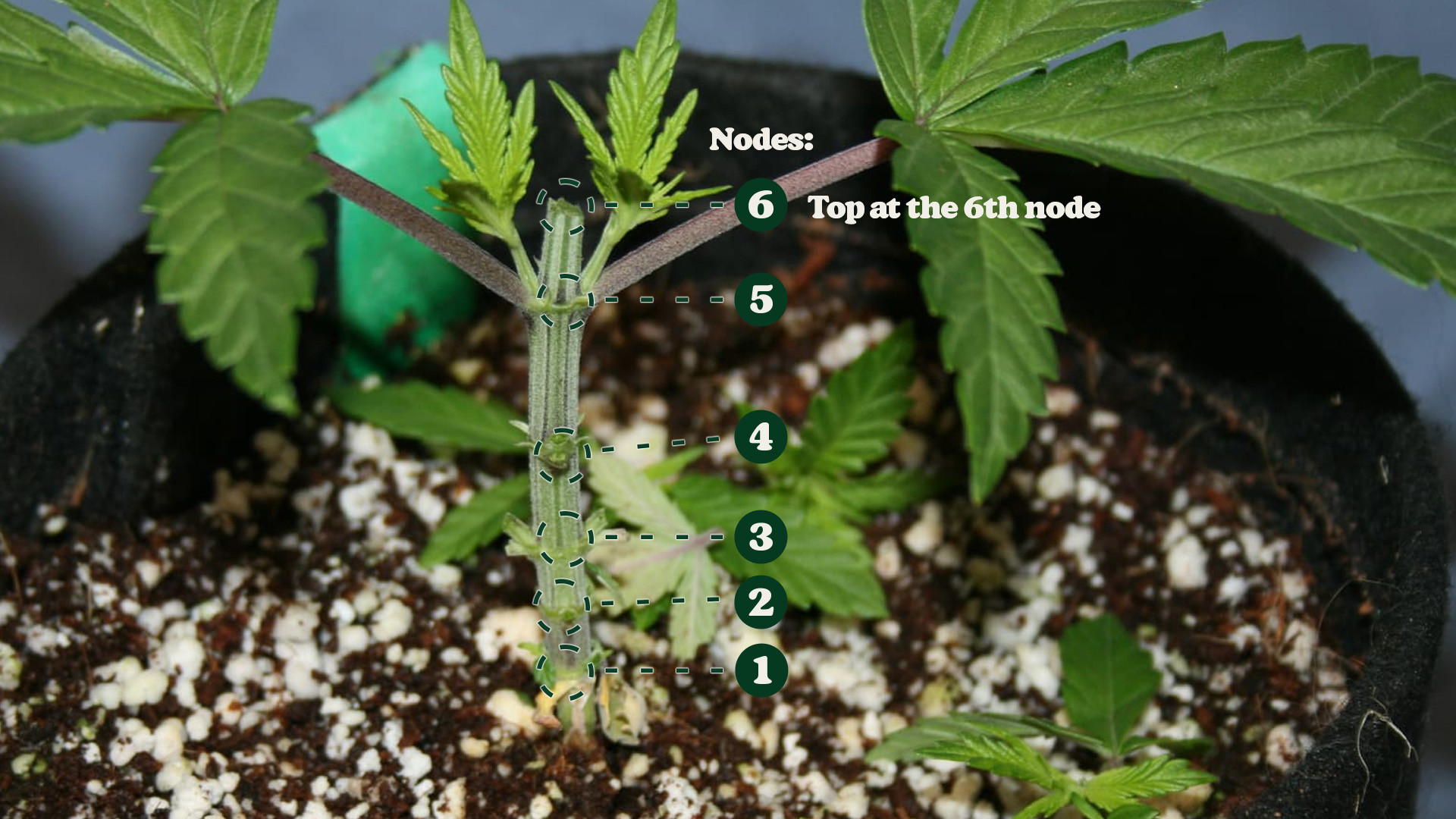 Most growers will top the plant early, usually after the plant has reached its 5th or 6th node. Grab your trimming scissors and follow the main stalk up until you see the newest emerging leaves. They will create a “T” where they protrude from the main stalk. Cut below the cross-section forming the “T”. You have just topped your plant. Simple, right?
Most growers will top the plant early, usually after the plant has reached its 5th or 6th node. Grab your trimming scissors and follow the main stalk up until you see the newest emerging leaves. They will create a “T” where they protrude from the main stalk. Cut below the cross-section forming the “T”. You have just topped your plant. Simple, right?
How Many Times Can You Top One Plant?
You can top a plant as many times as you need. Occasionally, after you top the main stalk, side branches will reach up beyond its peak. You can top side branches just the same as you would the main stalk. In both cases, the goal is to create a level canopy.
Growers who top a plant multiple times often use a longer vegetative cycle. In such situations, growers should opt for larger potting containers to accommodate the increased root growth during the extended vegetative period.
Suppose you are growing multiple strains in the same grow tent. In that case, topping is an excellent tool for maintaining an even canopy if one plant is much taller than the others.
What’s the Difference Between Topping and FIM?
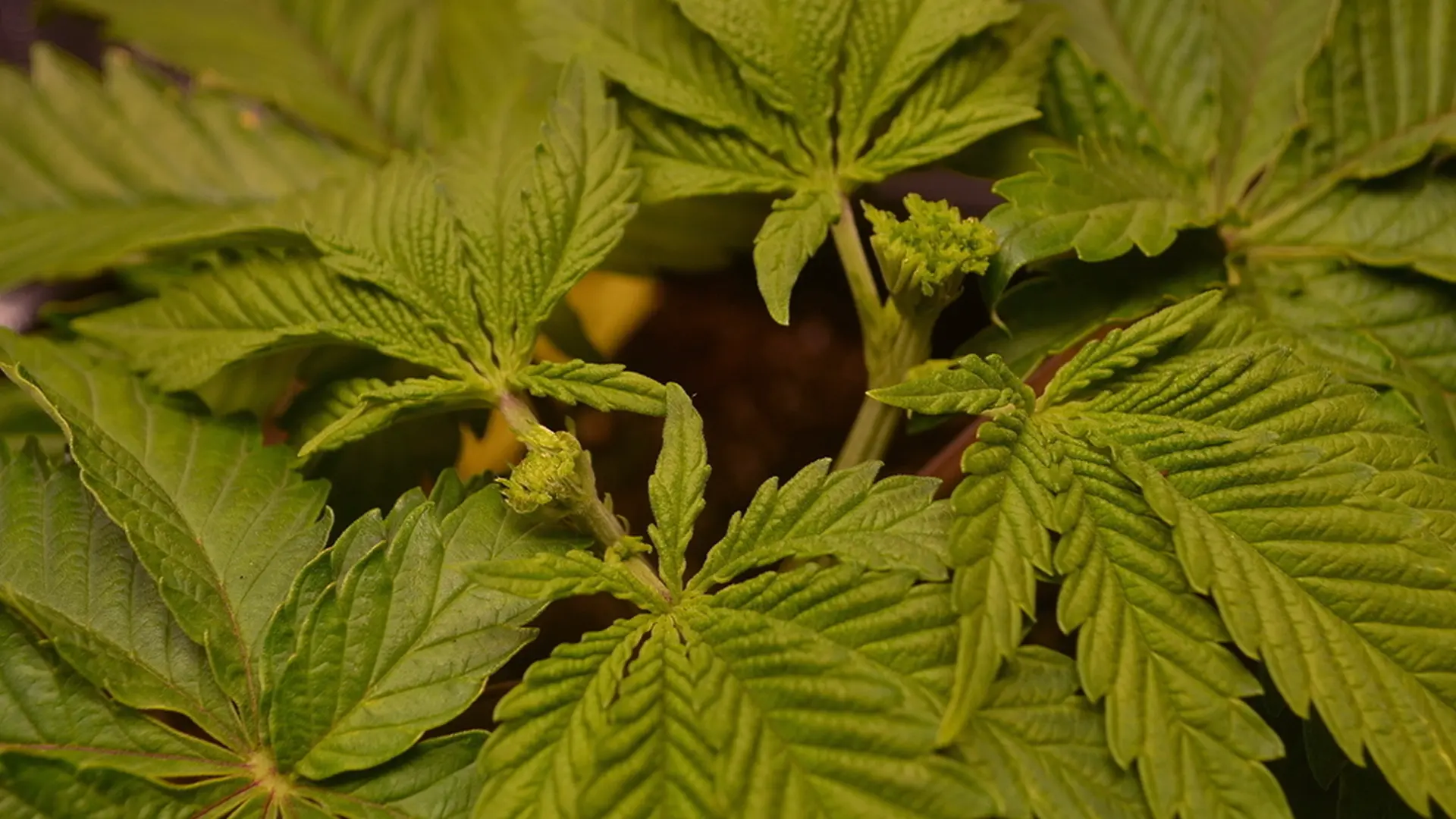 With topping, we cut below the “T” of the newest emerging leaf set. With fimming, we cut just above the “T”. When done correctly, fimming will often produce two main shoots, and occasionally, four if cut perfectly.
With topping, we cut below the “T” of the newest emerging leaf set. With fimming, we cut just above the “T”. When done correctly, fimming will often produce two main shoots, and occasionally, four if cut perfectly.
Topping cannabis plants will stop new vertical growth on the main stem. Fimming continues the vertical growth on the main stem, but as the cut recovers, side branches will have a chance to catch up in height, forming an even canopy.
Super Crop a Cannabis Plant for Bigger Yields
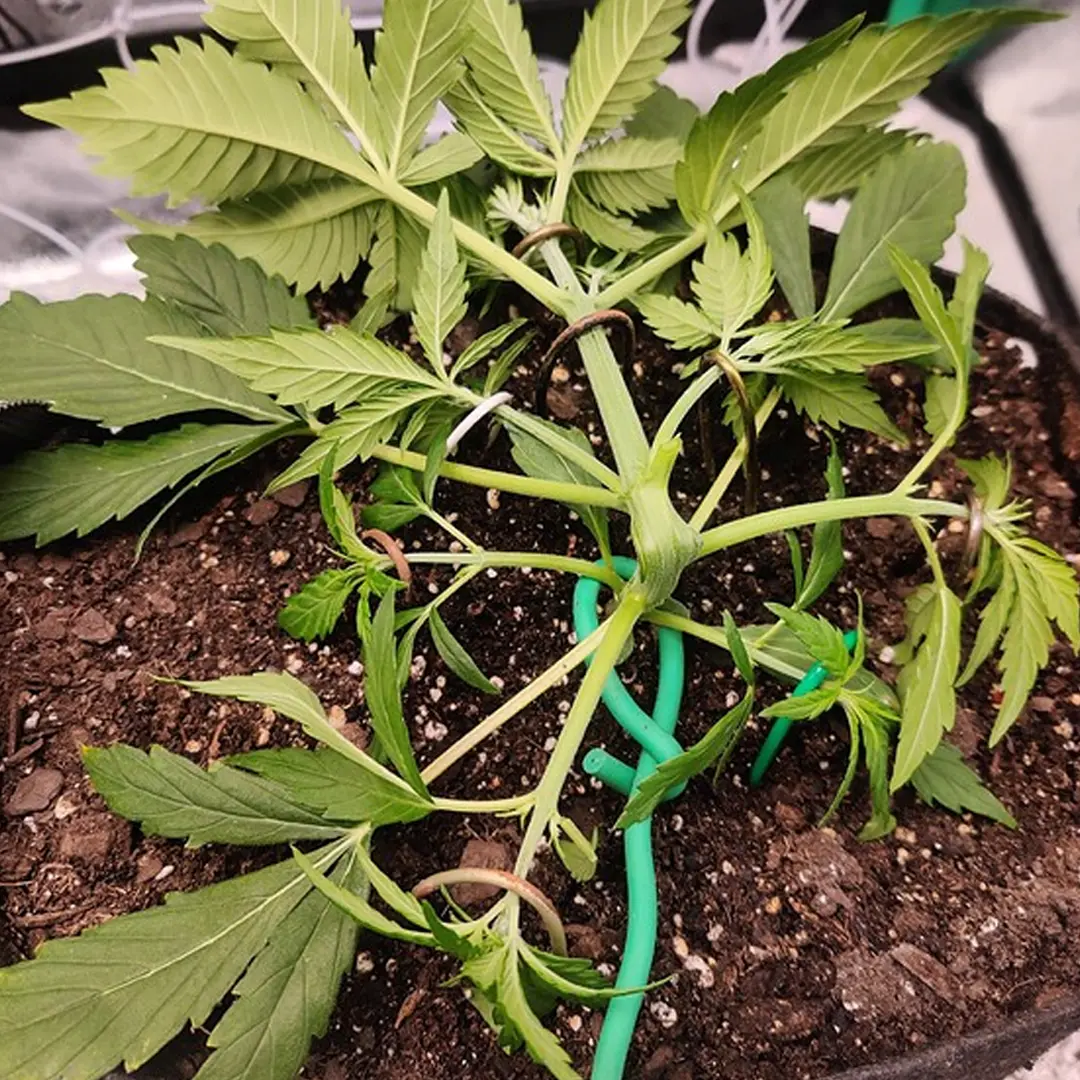 Super cropping a cannabis plant is one of the trickier high-stress training techniques. When done correctly, the branch will form a knot in the area of the wound. The knot or “knuckle” that forms at the bend point of the super-cropped branch is a recovery response. The enlarged area reinforces the branch's strength and can increase the delivery of nutrients to the branch in the future.
Super cropping a cannabis plant is one of the trickier high-stress training techniques. When done correctly, the branch will form a knot in the area of the wound. The knot or “knuckle” that forms at the bend point of the super-cropped branch is a recovery response. The enlarged area reinforces the branch's strength and can increase the delivery of nutrients to the branch in the future.
How Hard and Where Should You Pinch Without Snapping the Stem?
Of all the HST techniques, this one will have the most trial and error. Green, pliable stems are much easier to super crop without incident compared to thicker, woodier stems.
The goal is to rupture the internal cell walls without splitting or breaking the outer walls. Have your plant tape and splints standing by, but don’t worry, a healthy cannabis plant is resilient.
As you pinch the stem between your fingers, you can feel the internal cell walls give way. The weight of the branch will quickly cause it to fold over. You want to stop squeezing just before the flop. For thicker stems, roll them between your fingers like a pen. The friction will heat the stem and weaken the cell walls, making it easier to control the bend.
How Often Should You Super Crop?
In theory, you can do it as many times as the plant will tolerate, but growers typically supercrop a branch only once, or potentially twice. When it comes to canopy management, most branches are at a 90-degree angle after being super-cropped, so further super-cropping to maintain a level canopy isn’t often required.
How Will My Plant React After Super Cropping?
You’re going to need at least a week, usually two weeks, before you’ll see continued vigorous growth from the branch. Super-cropped branches will pause their growth to focus on recovery.
Mainline/Manifold a Cannabis Plant for Bigger Yields
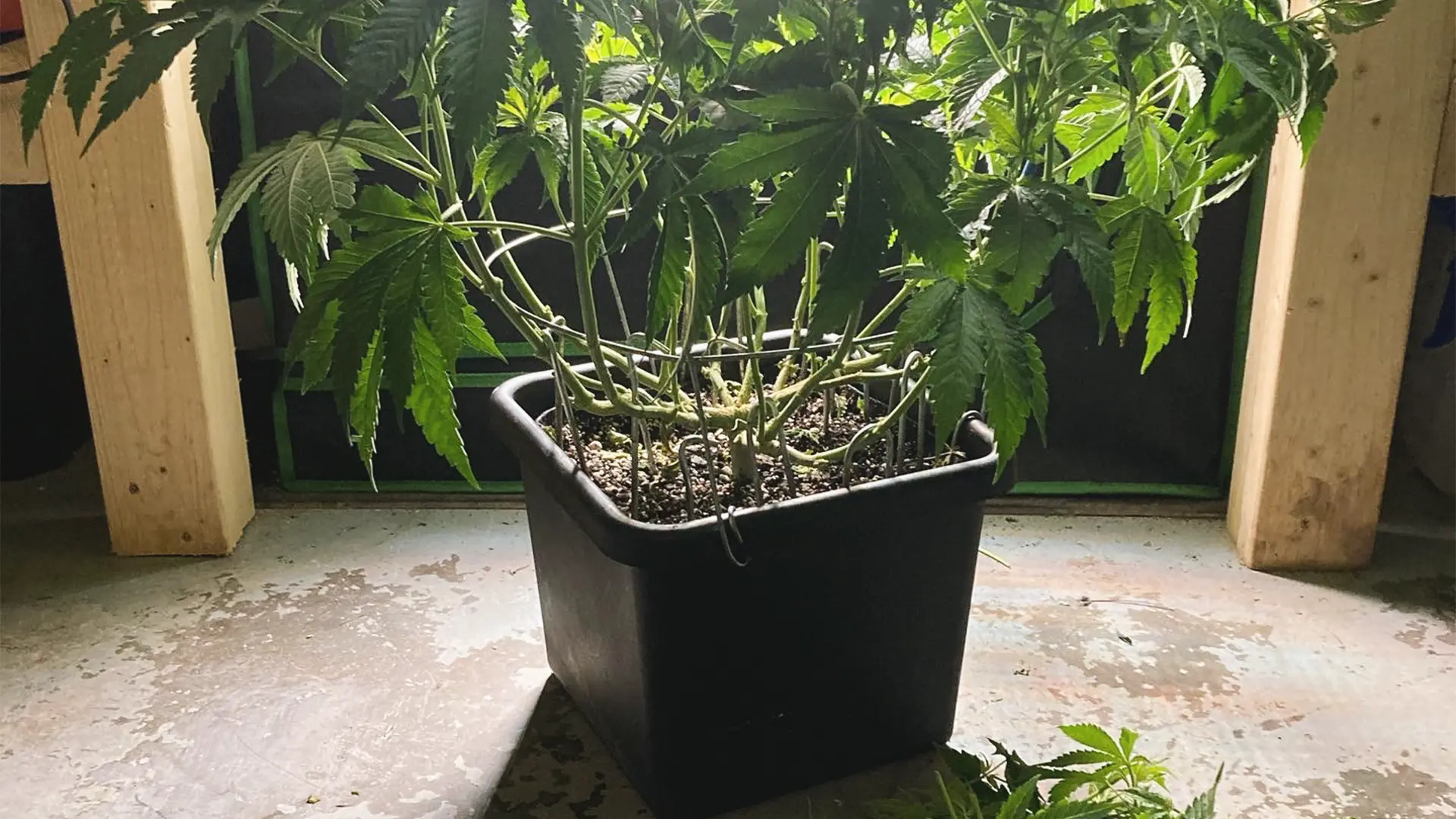 Plant manifolded by our forum user OGIncognito
Plant manifolded by our forum user OGIncognito
The manifold and mainline techniques are very similar. Both reshape the plant to form a number of top colas. Plants with this style of training grow as wide bushes with a level canopy. These techniques are great for growers who want to maximize the use of space in their grow tent.
When growing from seed, these techniques are often easier to accomplish compared to clones due to the symmetrical branching.
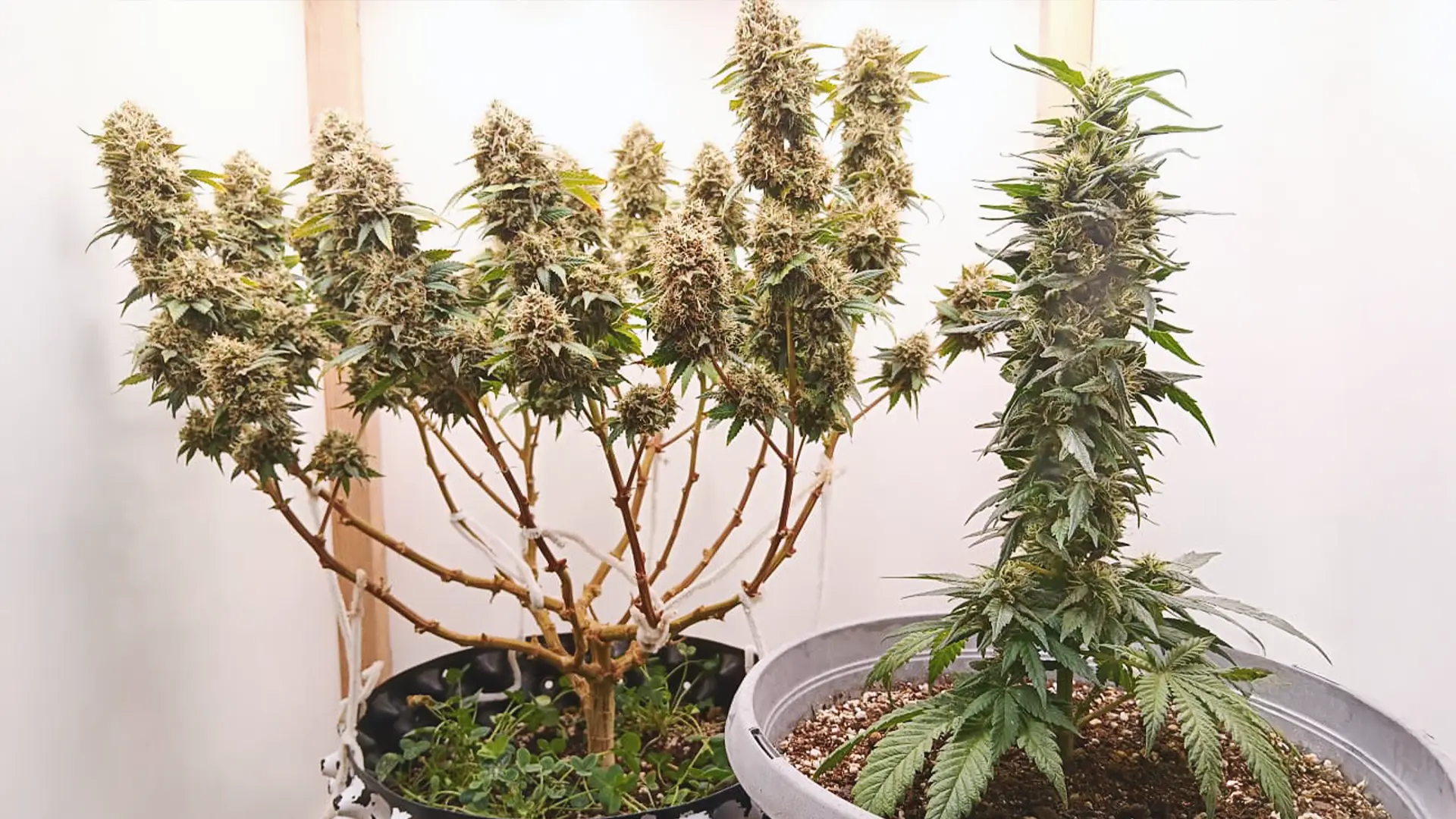 Regular grow vs a Manifold. The difference is immense! By forum user Madhatter1
Regular grow vs a Manifold. The difference is immense! By forum user Madhatter1
What’s the First Cut and How Do You Build the Manifold?
When using the manifold technique, growers will often let the plant grow to about five or six nodes. The first “true” set of leaves (leaves with 5 fingers) is usually at the third node. To create a manifold or mainline, top the plant above the third node but below the fourth.
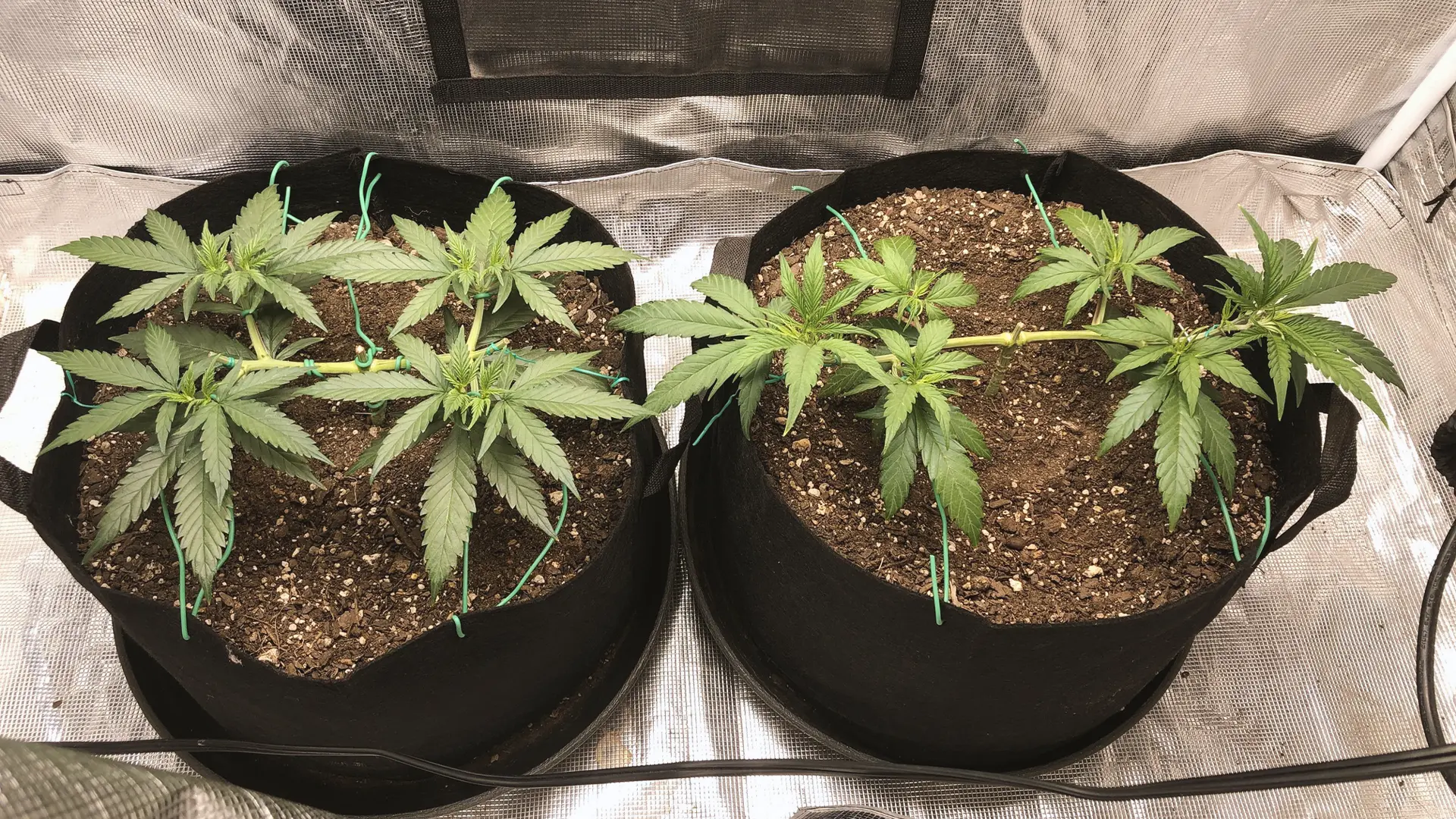 Setup by forum user Randy_Marsh
Setup by forum user Randy_Marsh
The main difference between the two techniques is the number of cuts you make. The mainline/manifold technique involves multiple cuts.
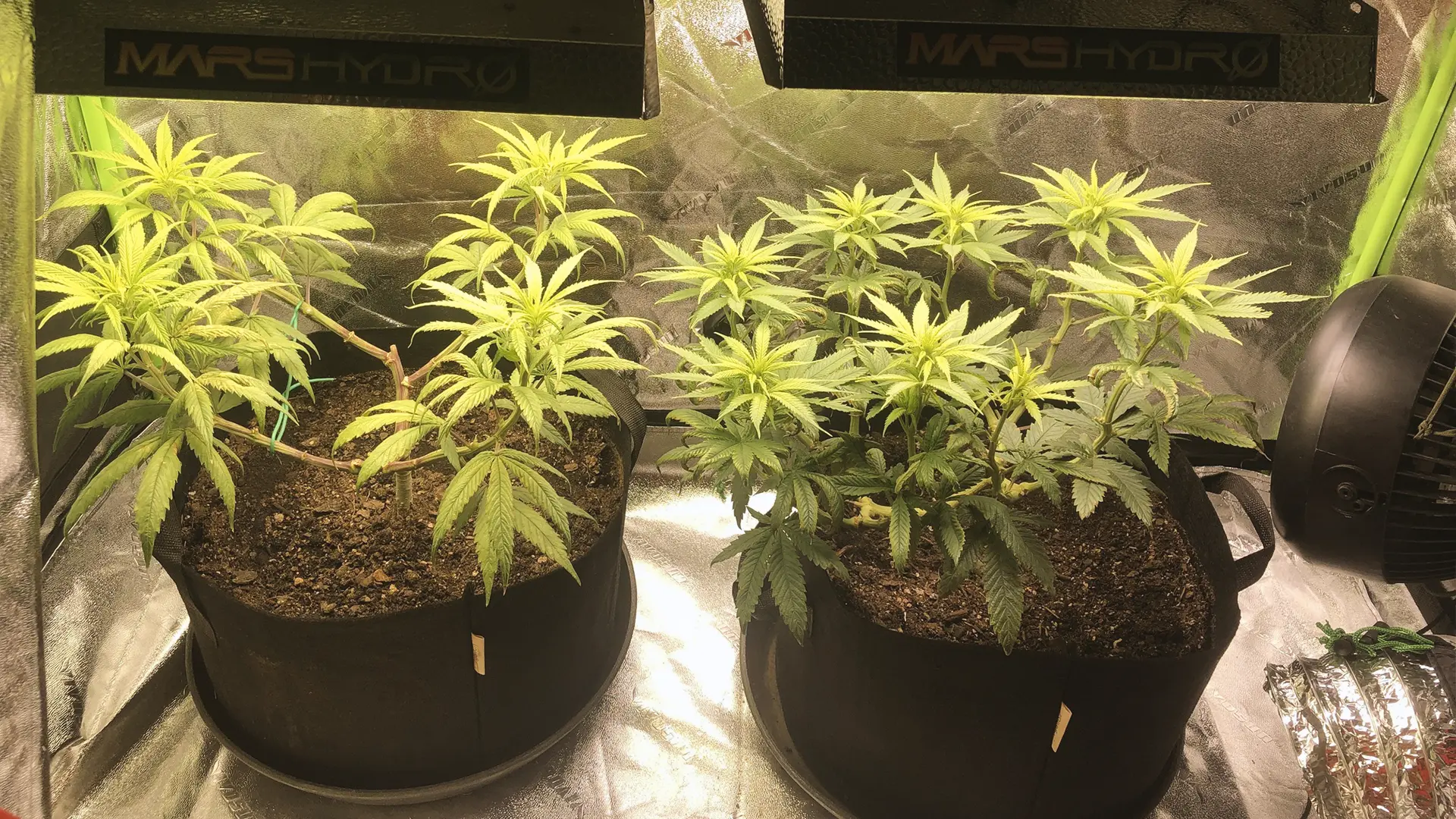 After a few weeks results are visible, by forum user Randy_Marsh
After a few weeks results are visible, by forum user Randy_Marsh
After the initial topping at the third node, growers then top the two remaining side branches. Mainlining would then top those two new branches as well after they grew out. Each time you top, it creates a “Y” shape with the new branches.
What Does a Mainlining Timeline Look Like?

Mainlining cannabis plants will add to the overall length of your grow. Plants will need one or two weeks to resume vigorous growth after this high-stress training technique. The manifold technique requires one less topping to the plant, which will reduce the amount of overall recovery time. You can anticipate an additional 3–4 weeks (cumulative) of vegetative time for recovery using these methods.
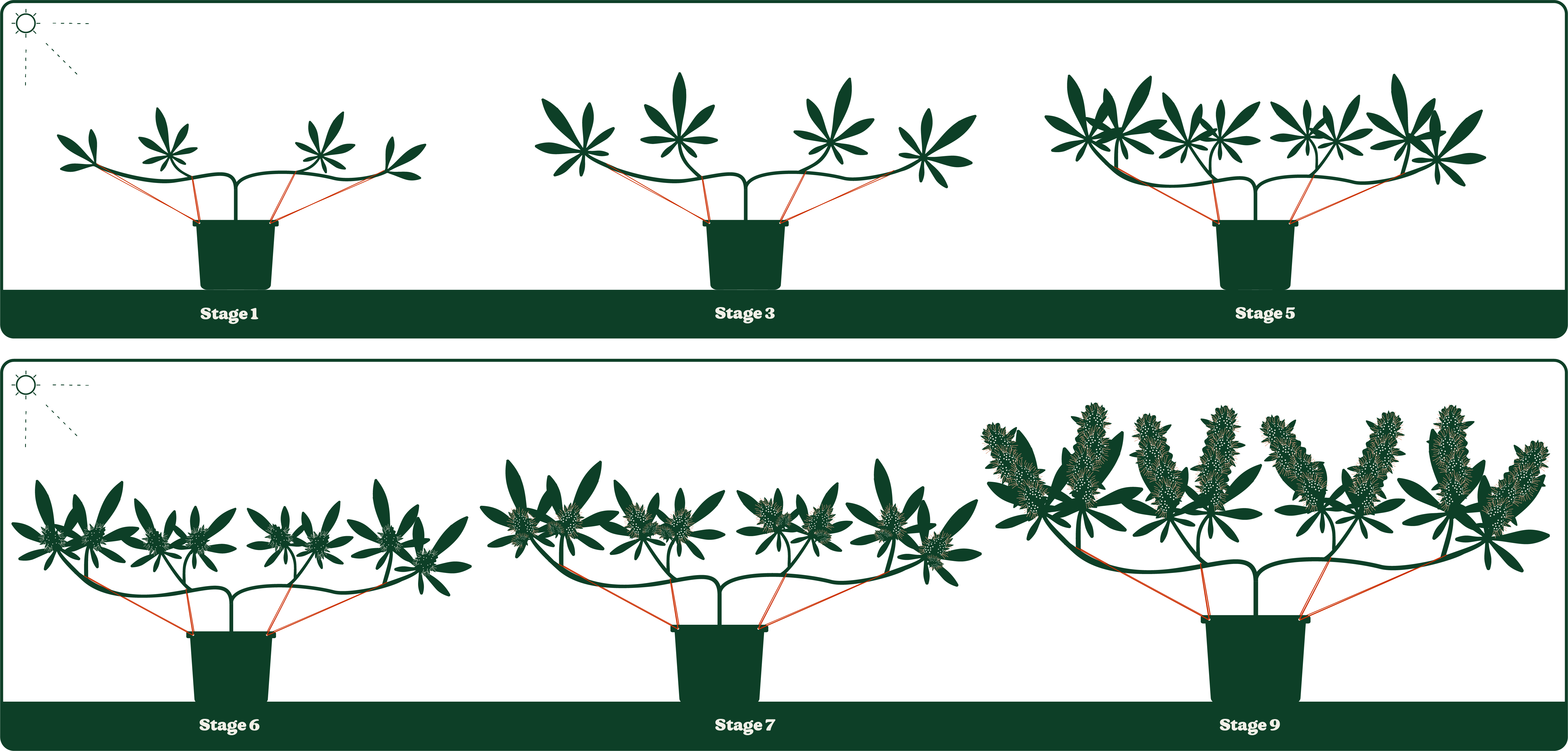
Is Mainlining Better Than Other HST Methods?
It depends. I like the shape of even branching and the number of large colas it can produce. However, it adds a considerable amount of time to the grow. If you’re looking for a quicker harvest, you may benefit from other LST and HST techniques, but if yield is your main goal, these are great tricks to know.
First Grow?
Can You Combine HST and LST for Maximum Yields?
Absolutely! My favorite 1, 2 combo is to top the cannabis plant (HST) but also bend taller branches down (LST) to allow the shorter branches to catch up. You don’t have to do them both at the same time, but you can if the plant is healthy.
Another handy combination is the use of super cropping, a SCROG net, and lollipopping. Growers maneuver the SCROG net over the tall branches and then super crop the plant where the branch meets the net. The weakened limbs can lie across the net for support. Then, lollipop branches that don’t reach above the SCROG net.
Tie Down vs. Stress Training: Are They the Same?
They both create stress to the plant, but like audio, there are different levels (volumes) of stress. A benefit of many low-stress training techniques for cannabis is that the recovery time is very quick, sometimes as quick as 24 hours. High-stress training techniques for cannabis can add days or weeks to the total amount of vegetative days because of the recovery time.
How Do You Help Plants Recover After High-Stress Training?
The best thing a grower can do to help a plant recover from high-stress training is to only do HST when it is healthy. Make sure it is recently watered and receiving all the nutrients cannabis needs. Do your HST within a few hours of the lights coming on, and keep your environmental conditions within range. With the right temperature and humidity, the plant will take up plenty of water and nutrients to speed recovery.
What Are the Signs of a Healthy Recovery?
In most cases, you can gauge recovery by the newest leaves. The normal growth rate may stall, but you can gauge progress by the speed at which new foliage appears on the plant. If the leaves are praying towards the light, you are alright. If they are droopy, you may see a longer recovery time.
I’ve split branches while pinching them, and I could see clear through the other side. Within days, the crack in the stem began to form a scab, much like the one that forms when we get a cut. By the time I harvested, that split was hardly noticeable.
How Long Should You Wait Between HST Sessions?
Experienced growers develop habits of doing certain HST techniques at different times during the vegetative stage. Plants are topped early, but the little side branches aren’t ready for super cropping or lollipopping yet.
Different techniques will cause different levels of stress. When lollipopping, I try to remove all of the lower branches that won’t reach the light, but at the same time, I don’t remove more than 30% of the total biomass at one time. If the branches to be lollipopped are less than 30% of the total plant, I’ll remove them all at one time. If I can’t, I’ll wait five to six days between lollipopping.
What Should You Feed After High-Stress Training?
Feed your plants after doing high-stress training with the typical amount of nutrients required for that stage of growth. Ideally, the plant was well-watered before performing any HST. Continue your normal feeding schedule.

Chad Westport
Chad Westport, a lifelong grower, breeder & cannabis educator, specializes in controlled environment ag with a degree in sustainability.
Continue Reading
You might also find these interesting.


